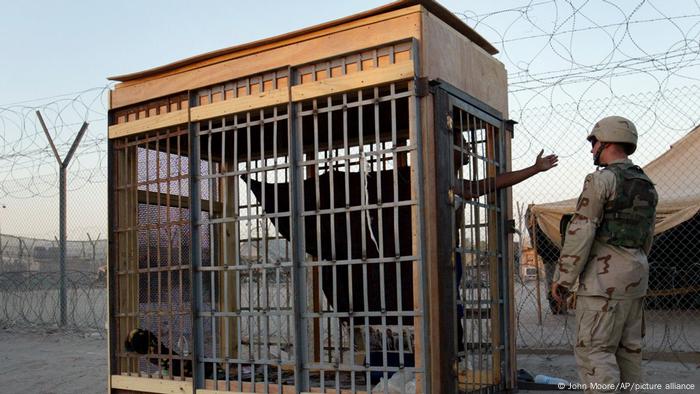A French artist used torture photos from Abu Ghraib for an oversized work of art at the Berlin Biennale. Some artists criticized this, others praised it.

The torture scenes in Abu Ghraib prison shook the world
In an open letter, 15 artists criticized a work by French artist Jean-Jacques Lebel, which is currently on display in the As part of the international art show “Berlin Biennale” in the Museum Hamburger Bahnhof in Berlin.
In the Rieckhallen, visitors can expect Lebel's labyrinth of terror, which consists of canvas-sized photographs. The motive: tortured and humiliated Iraqi prisoners in Abu Ghraib. The photographers were the US soldiers who tortured them.
Victims were not asked for permission
The lender of a work in the exhibition, Rijin Sahakian, opposed the work in an open letter co-signed by 15 artists. It states, among other things, that the Biennale used “photos of illegally detained and brutally treated Iraqi bodies” under the US occupation to exhibit the work. These were used for commercial purposes without the consent of the victims and without the participation of the Iraqi artists participating in the biennial. Their works were installed next to the controversial work without their knowledge.

The then US President George W Bush declared war on Iraq in 2003. The war wasn't supposed to end until 2011.
The curatorial team of the Berlin Biennale has not yet publicly commented on the allegations, but has announced that they will do so soon.
The German-Iraqi photographer Ihsan Jezany cannot understand the criticism of Lebel's work. “The artist wanted to remind us of what happened in Abu Ghraib. And that's a good thing,” he told DW. “I believe such images should be shown and if we hide them then we are only helping the perpetrators, not the victims.” Especially since these pictures have already been used by many artists and media worldwide, as Jezany pointed out.
'War crimes only end when wars end'
The horrific images from Abu Ghraib used by Jean-Jacques Lebel at the Berlin Biennale are deeply embedded in the collective memory. First published in 2004, they show, for example, a man who is being electrocuted on his penis, while another has to crawl naked on a dog leash. Abu Ghraib was a prison in Iraq where, under the US occupation of the country, guards cruelly humiliated inmates and captured their enjoyment on cellphone photos and film.
Ten years after the first release Bilder said the US investigative journalist Seymour, who brought the incidents to light, that something like Abu Ghraib could happen again at any time, including in the US military. “The only way to stop abuse and war crimes is for wars to stop,” he said in a 2014 interview with DW.